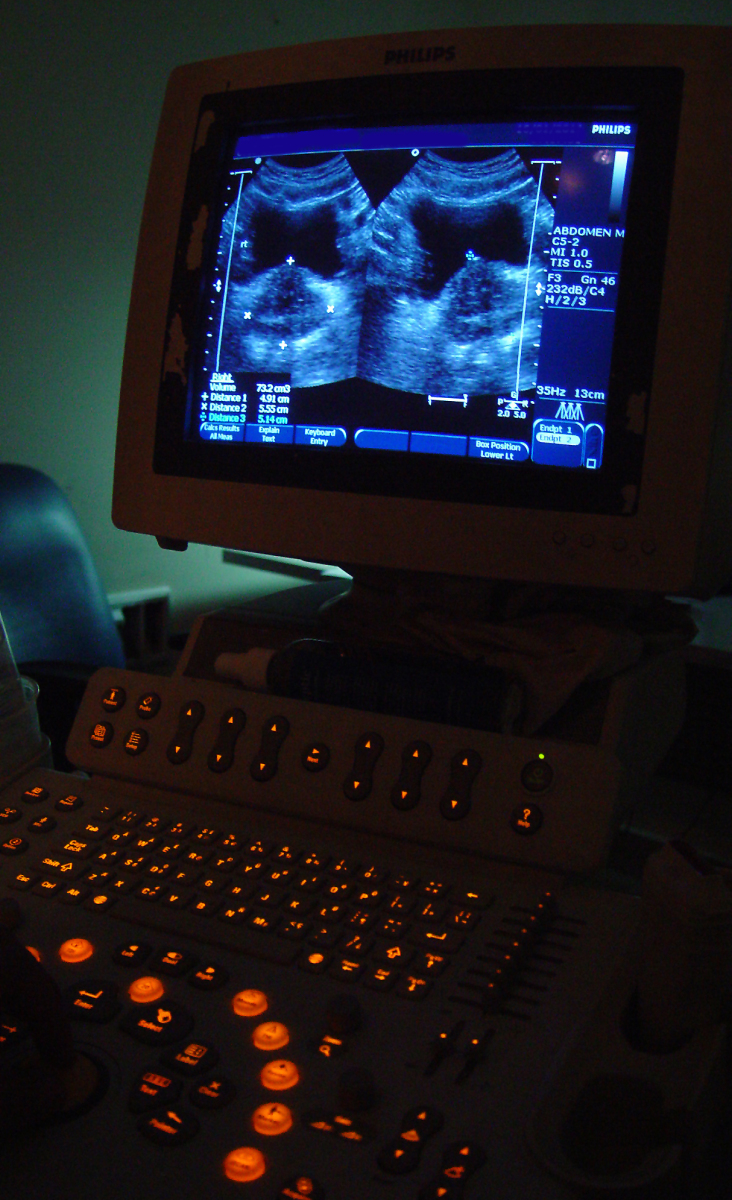Alzheimer's ultrasound breakthrough?
Interview with
On 12 March 2015, celebrated author Sir Terry Pratchett passed away after a  public eight-year battle with Alzheimer's Disease. This condition, which causes progressive loss of mental faculties, affects 40 million people around the world, and this number is expected to triple in the coming decades as the world population ages. But apart from symptomatic relief, there are currently no treatments that can actually halt the disease process. Now University of Queensland scientist Gerhard Leinenga has found that ultrasound waves can be used to remove from the brain the toxic chemical amyloid-beta, which, scientists think, causes Alzheimer's Disease. He spoke to Chris Smith...
public eight-year battle with Alzheimer's Disease. This condition, which causes progressive loss of mental faculties, affects 40 million people around the world, and this number is expected to triple in the coming decades as the world population ages. But apart from symptomatic relief, there are currently no treatments that can actually halt the disease process. Now University of Queensland scientist Gerhard Leinenga has found that ultrasound waves can be used to remove from the brain the toxic chemical amyloid-beta, which, scientists think, causes Alzheimer's Disease. He spoke to Chris Smith...
Gerhard - You can think of the Alzheimer's disease brain as a toxic environment for the cells in the brain. One of the main creators of this toxic environment is this molecule called amyloid beta which stops nerve cells communicating with each other and also, impacts on their health and survival. So, we knew that there was a high concentration of amyloid beta in the brain and a low level in the bloodstream. We wondered whether we could remove or flush out some of this amyloid beta by making the blood-brain barrier leaky.
Chris - It would effectively ooze out of the nervous system and into the bloodstream.
Gerhard - Potentially, some mechanism like that.
Chris - How easy is it to temporarily make the blood-brain barrier leaky then?
Gerhard - Up until very recently, difficult or impossible to do this in the way that was safe and reversible. So, we used a new technology called ultrasound to open the blood-brain barrier. So ultrasound is basically just the application of soundwaves.
Chris - How does the ultrasound open up the blood-brain barrier?
Gerhard - So, it does this through an interaction with molecules injected into the bloodstream called microbubbles. These are little gas-filled shells that ultrasound makes them expand and contract. This affects the blood vessels of the brain so that it makes the barrier slightly leaky. You can think about it as little holes or slight leaks between the cells where molecules can squeeze past.
Chris - And how do you know that's actually working? How do you know that the blood-brain barrier is being dismantled albeit temporarily by this process?
Gerhard - You can inject the molecule that normally doesn't get into the brain when you inject it into the blood and what we found is that these molecules were present in the brain. We could detect them after the treatment.
Chris - What about when you repeat this and you do this with mice that have this mouse equivalent of Alzheimer's disease? What happens to them?
Gerhard - So, when we open the blood-brain barrier in these mice over a course of treatment, we found that the amyloid beta levels were reduced by about 50% and that the memory of the mice was improved.
Chris - So, how do you think it works?
Gerhard - One of our original hypothesis was that the amyloid beta could be flushed out into the bloodstream through a leaky blood-brain barrier. But we couldn't detect high amyloid beta levels in the bloodstream. So, I wanted to look after that what was going on actually inside the brain. Another way that the amyloid beta levels can be removed is through the actions of microglial cells in the brain. These cells have some ability to eat the amyloid beta and remove it. But what I found was that after the course of ultrasound treatments, the ability of the microglia to eat the amyloid beta was about doubled.
Chris - These cells were effectively consuming and removing the toxic protein that are built up and was that rendering it safe?
Gerhard - That's what we found within the microglial cells in compartments that normally degraded or chewed up and make it safe.
Chris - Could there not be a downside to albeit temporarily dismantling your blood-brain barrier presumably, it's there for a reason?
Gerhard - When we think about opening or making the blood-brain barrier slightly leaky, you need to think about it being made leaky to some molecules but not others. So, the size of the opening of the blood-brain barrier is enough say, for smaller molecules and proteins to get into the bloodstream but not large enough for say, bacteria or viruses to get into the brain. We didn't see any side effects in the mice that we treated. In fact, their behaviour was improved and there was no damage to their brains or the cells in their brains.
Chris - Would you regard this as a possible therapy for humans?
Gerhard - I think it is a possible therapy for humans. Once we can scale up and adapt the technique from treating a very small brain such as the mouse brain with a thin skull to a large brain like a human brain with a thick skull, I think that this could definitely be applied potentially in Alzheimer's Disease patients.









Comments
Add a comment